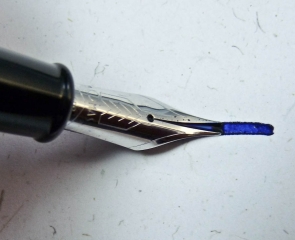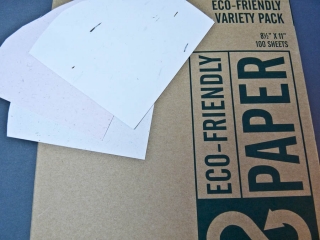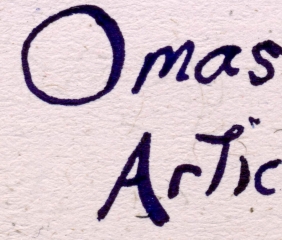The Parker 51 changed the face of pen design with such advanced features as the tubular, hooded nib and aerometric filling system. Unlike many radical designs it worked incredibly well and its successful production run was decades long. Parker was on a roll and eventually an improved, ingenious successor model was readied to eclipse the 51. We all remember that one, right? Um…right? I’ll give you a hint: it was called by another number. Got it now? No…not the 75. That was a terrifically successful pen with an incredibly long production run but this was before that one. Got it yet?

OK, I was being mean with the guessing game. Few people remember the Parker 61 and for good reason: it followed a legend and had several disappointing flaws. Let me rephrase that and instead call it a fabulous flop. Every once in a while a pen comes along with an advanced and clever solution for a problem that people didn’t realize existed and the Parker 61 was one of those pens.
The 61 was the last advance in the category of self-filling pens that began when the rubber sac and lever came into being. In fact this model not only saw the switch to ink cartridge/converter fountain pens it was swept up in the change. A watershed pen that may have been so advanced it was partly responsible for its own ill luck.
Now that I’ve reached this point I feel I may have been a little harsh. The 61 did have one of those super long production runs Parker pens always seemed to be blessed with like the 51 (1940 to 1976) and the 75 (1963 to 1994). Its run was not as long as those two but was an astounding 27 years (1956 to 1983). You can’t fault that kind of longevity even if it was not quite the same pen at the end as the beginning (more on that later).
Let’s take a look at the 61 and the mechanics so you can get an idea about what I was alluding to. At first glance the 61 is only subtly different from its predecessor. The pen has a plastic barrel with a hooded nib and metal cap à la Parker 51. Closer inspection shows it cuts a svelter figure and is squared off at the jeweled barrel end. Overall a very evolutionary design showing the change in preferences as the 50s marched towards the next decade.
A few other things should be noted about the new duds the 61 wore. First off is the “arrow” on the top forward position of the hood. It certainly reminds you how to hold the pen and has a great “jet age” feel to it. More striking are the rainbow metal caps on the first edition pens. Parker used several different metals in these to create a very pleasing layered effect. Due to a high rejection rate in production eventually these were deemed too costly to continue.

Inside the pen there were changes more revolutionary then belied by the staid exterior. In the front the nib, collector, and feed were generally along the same lines as the 51 with one important change: A new tab on the nib acted at a locating element to finally make alignment with other pieces far easier. If you’ve ever assembled a 51 you know this is no small thing. The real pièce de résistance was behind that part of the pen: The capillary filler. Fountain pens always used capillary action to move the ink along the feed to the terminus of the nib point. The 61 took this to the next level by being filled by this very same phenomenon.
Capillarity is the when a liquid tends to rise in opposition to the force of gravity in narrow tubes or small openings like between grains of sand. Parker decided to build itself a capillary filler so that when backed up into ink would suck it in with no effort needed. There were no moving parts to need service and was “clean” in use due to being coated in Teflon, another modern magic material which repelled ink residue. It’s often said that this filling system was in response to Sheaffer’s Snorkel “clean” syringe filler (first seen in 1952) however Parker bought the rights to this idea in three years earlier which shows they were thinking it had potential before the Snorkel went on sale. The working bit was a thin polyethylene film rolled tightly together but not fully touching inside the housing. That’s where the ink went and waited to gather and flow out to the feed and nib.
So, this all sounds great, right? Who wouldn’t want a clean, easy, and gadgety way to put ink into your pen? But all was not well with Parker’s attempt to push the edges of technology and problems reared their inky head quickly. First off if the ink was allowed to dry up in the pen it was a terrible and tedious job to try and get it out. You couldn’t run fast flowing water through it and so soaking and shaking was about the only answer. Parker had to sell bulb that could be fitted to the filler end and force water in and out to their repair people. Even doing it that way was slow. You probably realized the previous issue did not bode well if you wanted to change your ink color. If you can’t easily clean out a pen then you will always have old ink contaminating the new. This kind of thing meant a high rate of repair returns which is never a good sign.
Eventually Parker redesigned the 61s filling system to be a cartridge or converter type in 1969 and all pens returned for service automatically got switched. So it really became quite a different pen in one fell swoop and ushered in that soon to be the most common method of holding ink. Thus the complex marvel Parker advertised as “a gift unlike any on this planet…or any other” and the fountain pen’s rocket age came to an end. It would be decades before we would see a wide variety of self-fillers again beyond the stalwart Germans and their piston fillers.
Now that you’ve been through Parker 61 101 we can take a peek at the subject pen of this post. The well rounded and erudite pen and paraphernalia collector known on Twitter as Toaster_Pastry called it “Probably the coolest design of the 20th Century next to the Coke bottle” and I see why he is so enthusiastic about the Parker 61 desk pen.
There is now a certain retro-coolness to the proportions of this pen. Without a long taper it’s shorter than desk pens I’m used to and terminates instead with a metal cap which is a head-on intersection of two conical shapes. That along with a sleek gold trumpet holder perched on the ball of the “magnetix” articulation system immediately plants it in the era of slab sided Lincolns, thin ties, and beehive hairdos. It’s got style of a kind forever lost shortly after it was made. You could easily see someone in a neutral gray sleek silk suit reaching for it across a Danish modern desk located in a suite at the Century Plaza hotel in Los Angeles.

Parker’s desk sets also were advanced over other brands with the aforementioned “magnetix” system. There is not friction dampened ball joint here but a ferrous sphere and a strong earth magnet in the base. The holder is held tight in a metal socket and can swivel to any angle. The base it sits is black-gold Italian marble which has such a mid-century feel to me I can have flashbacks to the lobbies of International style skyscrapers I’ve seen it used in.
There are far better histories of the Parker 61 than I have written like this one. I hope my brief background helps you appreciate this unique pen. For the collector and lover of vintage pens the bad reputation should be avoided because with a little TLC these pens can be not just fascinating yestertech but also good writers.


















